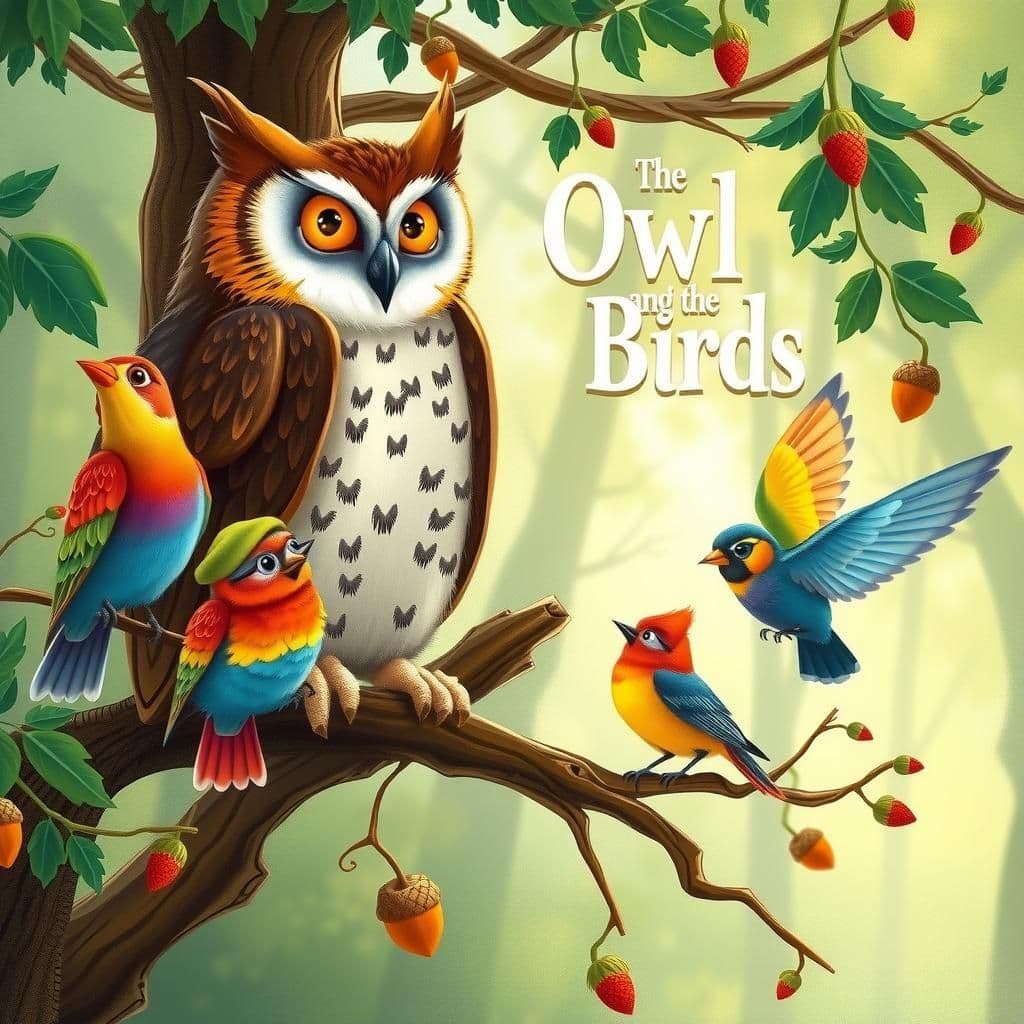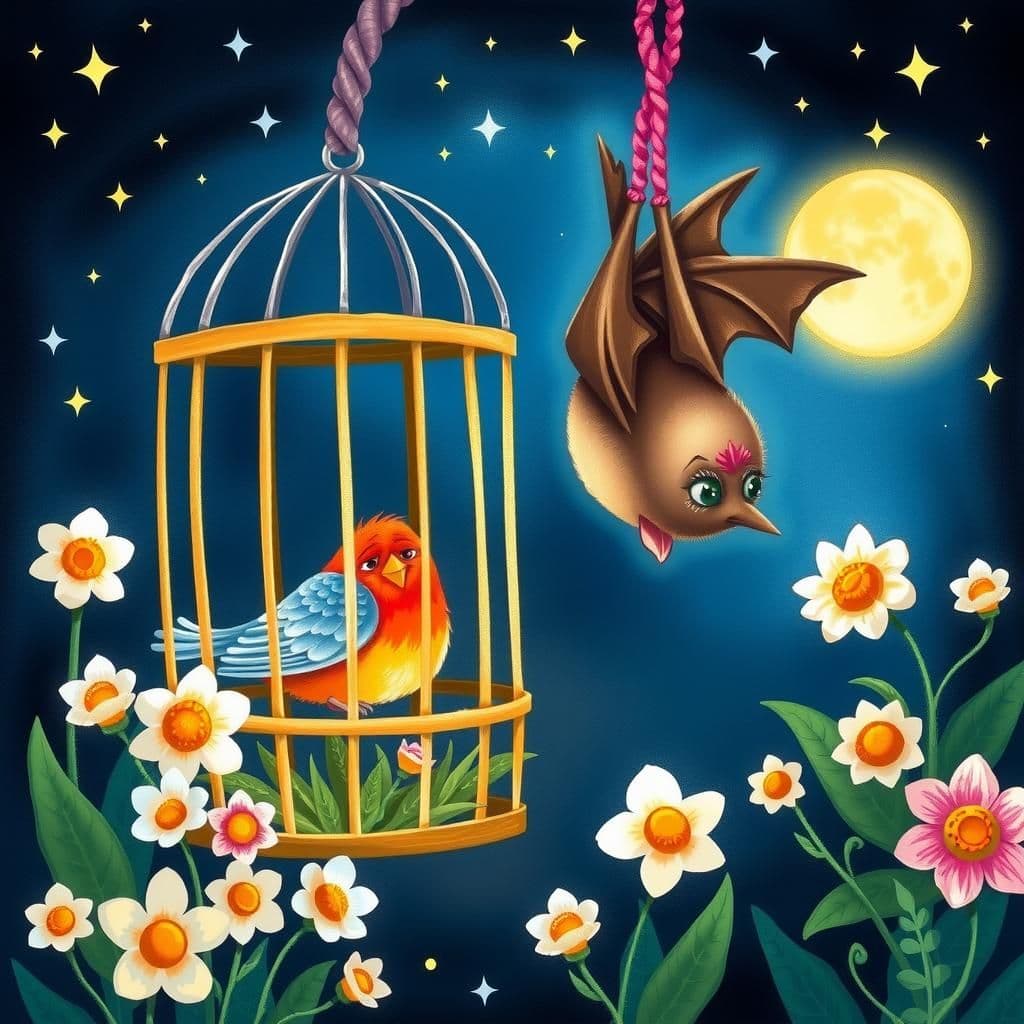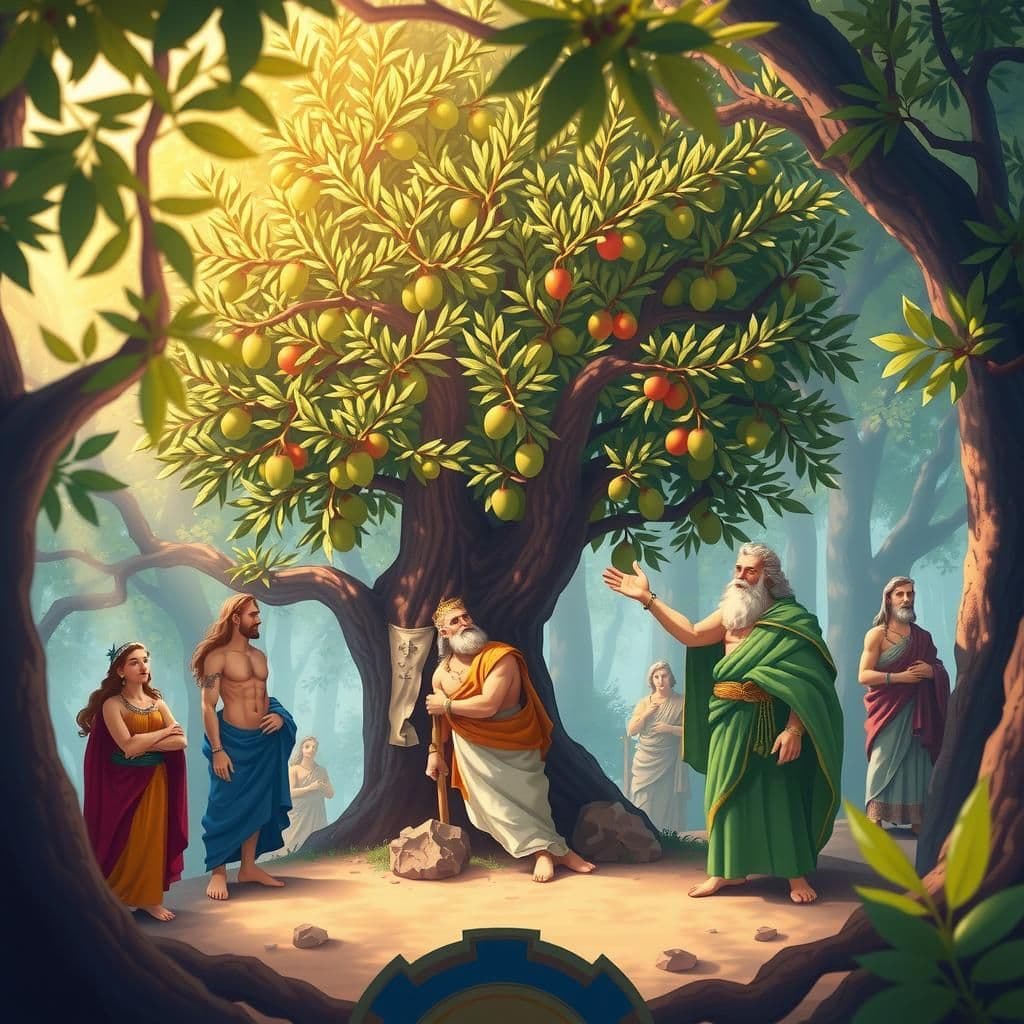The Owl and the Birds

Story Summary
In "The Owl and the Birds," a wise owl shares her knowledge through moral-based storytelling, warning the birds to uproot sprouting acorns and flax seeds that would bring danger from mistletoe and hunters. Dismissing her counsel as madness, the birds later regret their disbelief when her predictions come true, realizing the owl's wisdom echoes the lessons found in classic moral stories. Now, they revere her in silence, reflecting on their past folly and the importance of heeding wise advice.
Click to reveal the moral of the story
The story illustrates that wisdom often goes unrecognized until it is too late, emphasizing the importance of heeding wise counsel before facing inevitable consequences.
Historical Context
This story draws from Aesop's Fables, a collection of moral tales attributed to the ancient Greek storyteller Aesop, who lived around the 6th century BCE. The narrative reflects themes of wisdom, foresight, and the consequences of ignoring sound advice, common in many cultures' folklore, emphasizing the value of heeding warnings from those perceived as knowledgeable. The owl, often symbolizing wisdom across various cultures, serves as a cautionary figure, illustrating the consequences of human folly and the importance of listening to wise counsel, a motif prevalent in both ancient and contemporary storytelling.
Our Editors Opinion
This fable underscores the importance of heeding wise counsel and recognizing potential dangers before they manifest, a lesson that resonates in our modern lives where ignoring expert advice can lead to significant consequences. For example, in the context of climate change, many individuals and leaders dismiss scientific warnings about environmental degradation; only when faced with the dire impacts—such as extreme weather events—do they wish they had acted sooner to prevent the harm.
You May Also Like

The Cage Bird and the Bat
In this timeless moral story, a caged bird sings only at night, having learned the hard way that singing during the day led to her capture by a fowler. When a bat questions her precautions, it highlights the futility of taking such measures after already being imprisoned. This short story serves as a powerful reminder that precautions are meaningless once one is already in danger, making it a valuable addition to any collection of famous moral stories for kids.

A Valuable Suggestion
In "A Valuable Suggestion," a President of a Big Nation plans an extravagant naval demonstration to intimidate a Little Nation during a quarrel. However, after receiving a clever note revealing the Little Nation's awareness of the Big Nation's naval fleet, he wisely cancels the costly display, saving a billion dollars. This decision not only exemplifies the timeless moral of humility and understanding but also allows him to secure a favorable arbitration outcome, making it a compelling quick read story with moral lessons.

The Trees Under the Protection of the Gods
In "The Trees Under the Protection of the Gods," various deities select trees for their protection, favoring those that do not bear fruit to avoid the appearance of greed. Minerva advocates for the fruitful olive, leading Jupiter to impart a thought-provoking moral: true glory lies in usefulness, not superficial honor. This short and sweet moral story highlights the importance of impact over appearance, making it a compelling lesson on value and purpose.
Other names for this story
Wisdom of the Owl, Birds and the Wise Owl, The Owl's Caution, Acorns and Advice, The Owl's Prophecy, Secrets of the Wise Owl, The Owl's Warning, Lessons from the Owl
Did You Know?
This fable highlights the theme of wisdom often going unrecognized until it is too late, illustrating how those who dismiss sound advice may suffer the consequences of their ignorance. The transformation of the Owl from a disregarded advisor to a figure of respect underscores the value of heeding warnings and the regret that can accompany inaction.
Subscribe to Daily Stories
Get a new moral story in your inbox every day.